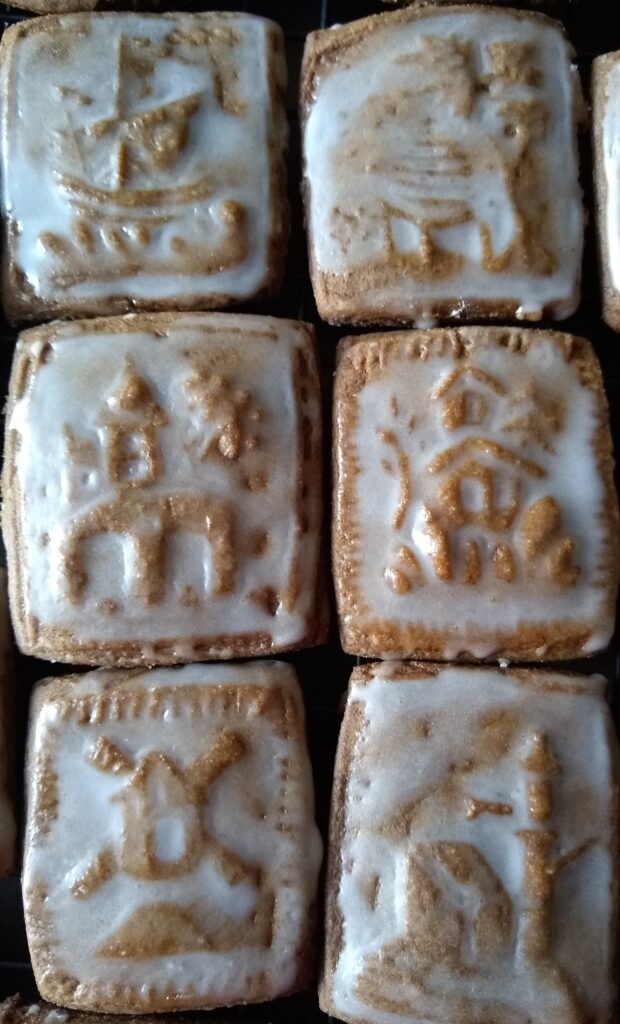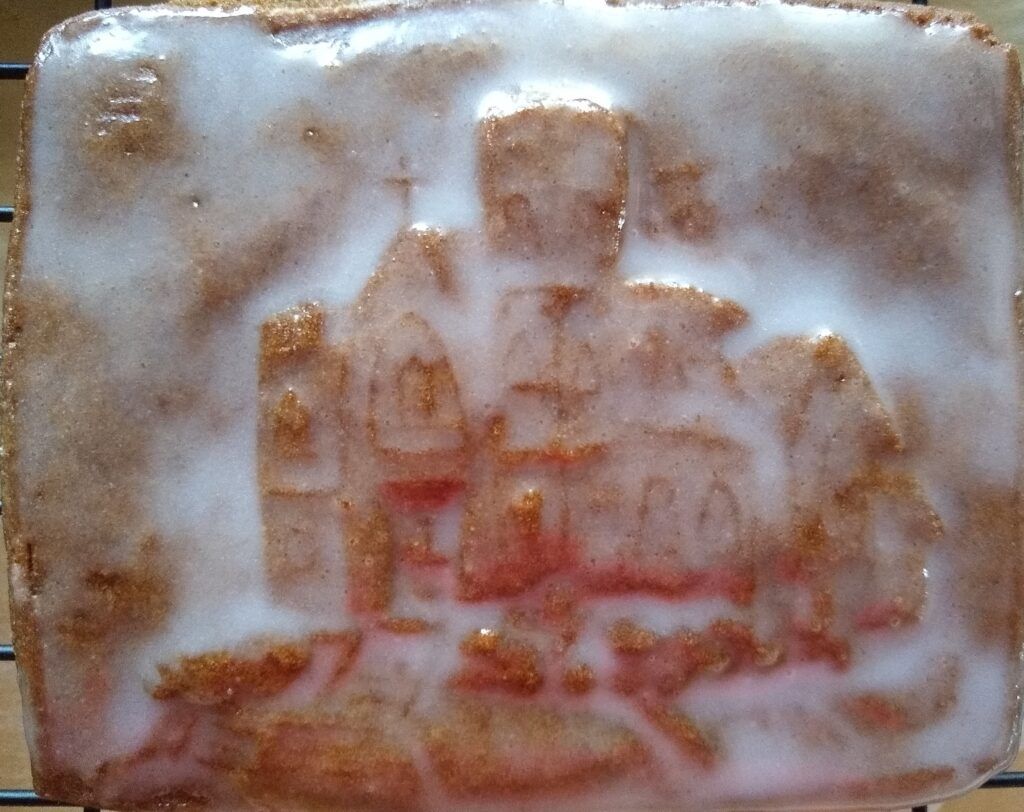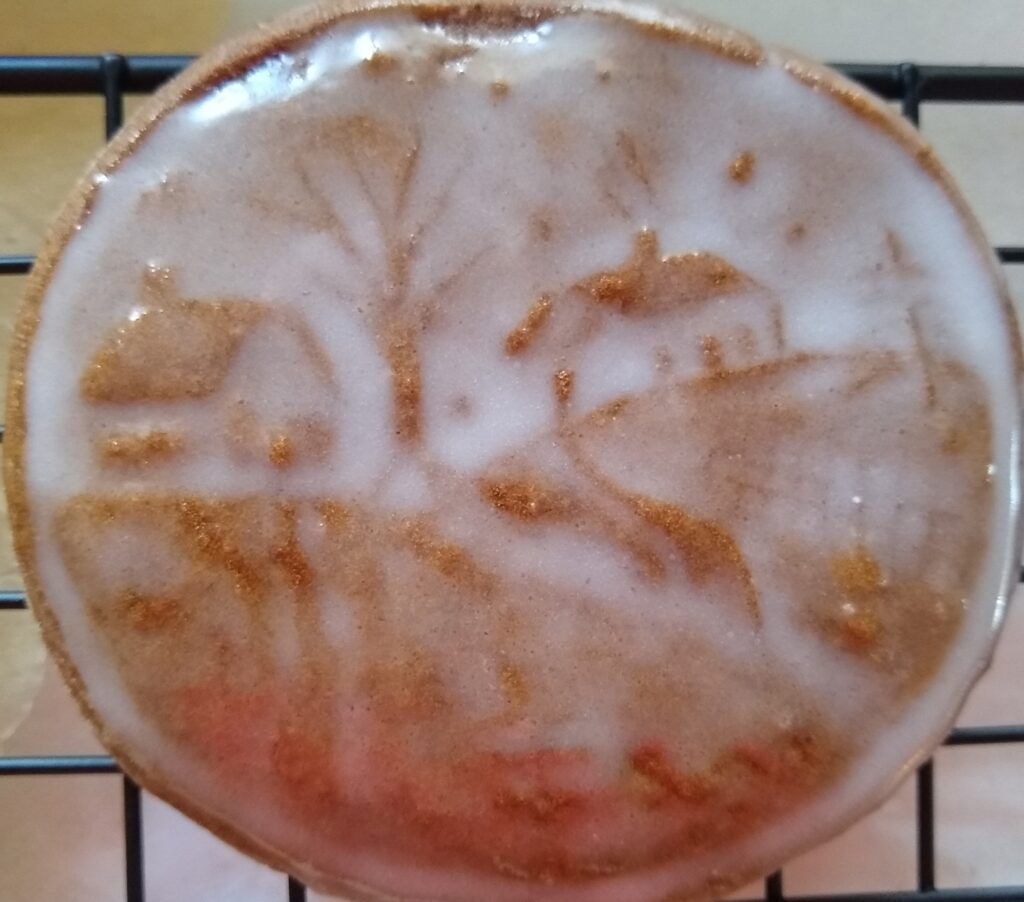While I love decorating Gingerbread cookies with icing, I also like to make molded Gingerbread cookies, especially if I have carved good molds for them. You could even use them to decorate a Christmas tree, which is one of the first decorations recorded for Christmas trees in America. They appear in a painting of a family by Lewis Miller, who painted everyday scenes of life in the early 1800s. Miller painted a table top size Christmas tree in the background of a family during Christmas, and the molded cookies are hanging on the tree (if you look at the painting, the cookies are the squares with little dots in the center, though many will call them Springerle instead of Gingerbread; my opinion is they were likely some of both. Here is a link to the picture). In the post about carving gingerbread molds, I talked a little about how I make the molds, so this post is about using them for baking molded Gingerbread.

When using the mold to make cookies, I have had a lot of practice (I was part of a group that made all the cookies for Old Salem evening tours for a number of years)! There are a number of Gingerbread recipes that will work with the molds. The main thing is to have is a smooth dough that isn’t sticky, and won’t puff up or spread when baked. Most recipes that are good for gingerbread for icing or making gingerbread houses is perfectly good for making press molded cookies. If you want to make really 17th century German style gingerbread, use honey instead of molasses. Honey was used for gingerbread in Germany and much of central Europe up until at least the mid-19th century, and many still use it today. The English turned to molasses early, and in America most gingerbread had become molasses gingerbread by the last decade of the 1700s, even if it was made by Germans.
(The cookies on the above right were made using new molds I carved this year. Several of them are copied from original molds, while I created two of them myself, including the pump at the bottom right. These small molds are relatively easy to carve, as they are not very detailed. These cookies are about 1 1/2 inches high.)
When you roll out the dough, it needs to be very cool, though right out of the fridge might be a little too stiff. I have done the method of rolling out the dough and pressing the mold into it, and it works okay, especially if the mold is fairly simple in design. However, I don’t really use this method anymore because I had so many cookies I had to ball up and re-roll out that I got frustrated with the technique. When I was editing a translated German cookbook for Old Salem, my staff and I were looking at 18th century German recipes from two different cookbooks. In them they describe forming a square of dough, dusting the mold with flour, and then pressing the dough into the mold. You need to have a piece of dough a little thicker than you want, so that you can press it into the mold and get a good image, then turn it over and peel it off the mold onto the table or cutting board, then cut or trim the edges for the finished cookie. It is definitely more time consuming, but for intricate designs, I have found it works better. As for dusting the mold, the best thing is to get some good cheesecloth (with fine holes, not coarse ones like you find at a grocery store) cut a piece about 6-7 inches square, put some flour in it, then use a string or twist tie to close the cloth around the flour creating a pouch. This can then be used to dust the mold and the dough without getting big bits of flour that cause register problems with the designs (this was technique was described in the 18th century cookbooks). Generally, press-molded gingerbread cookies need to be at least 1/4 inch thick, so they are a bit thicker than a gingerbread man, but that is just part of using the molds to make them. You can also glaze the gingerbread, which can help bring out the design on the darker cookie dough once they are baked. The practice of using colored icing sugar to highly decorate sugar cookies is similar, but probably dates to when white sugar became cheaper to purchase, around the mid-19th century (most of my research stopped at about this time, since so much changed with cooking techniques at that point; and yes, I have researched both the history of sugar production and gingerbread making). If I can get permission from Old Salem, I will post my research paper on gingerbread sometime.
(If you are interested in the cookbook I described called The Raised Hearth, you are welcome to buy it though The Book Patch. Even though I am listed as the author/editor, I do not have any rights to the book. The book is owned by Old Salem Museums & Gardens, and they get any profits from its sale. The book has direct translations of the 18th century recipes, so it is not a modern cookbook with recipes you can use in today’s kitchen. Someone who has experience with historical cooking and cookbooks from the time period can experiment with the recipes and cook with them, which is what we used the book for at the museum where I worked.)


